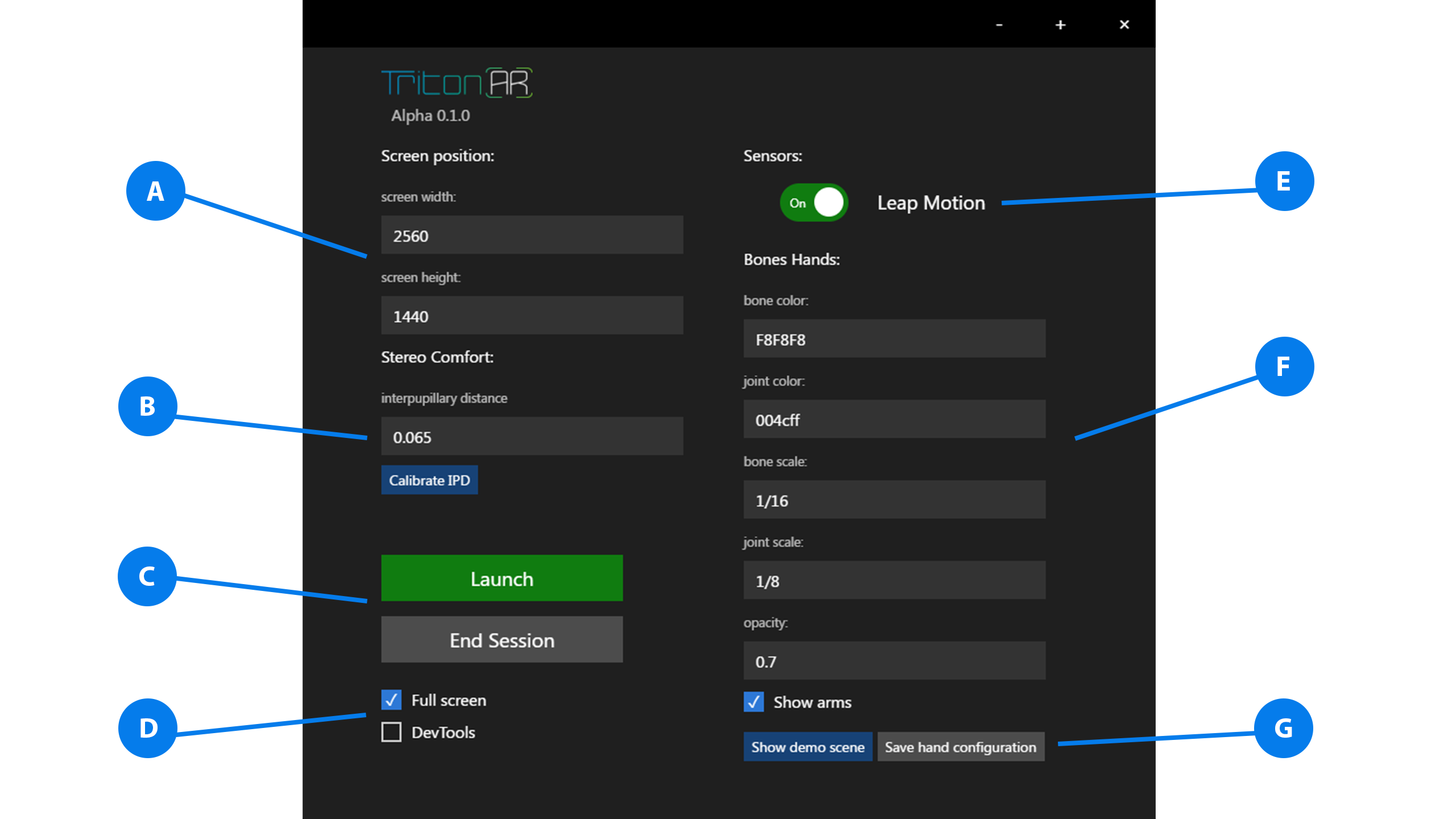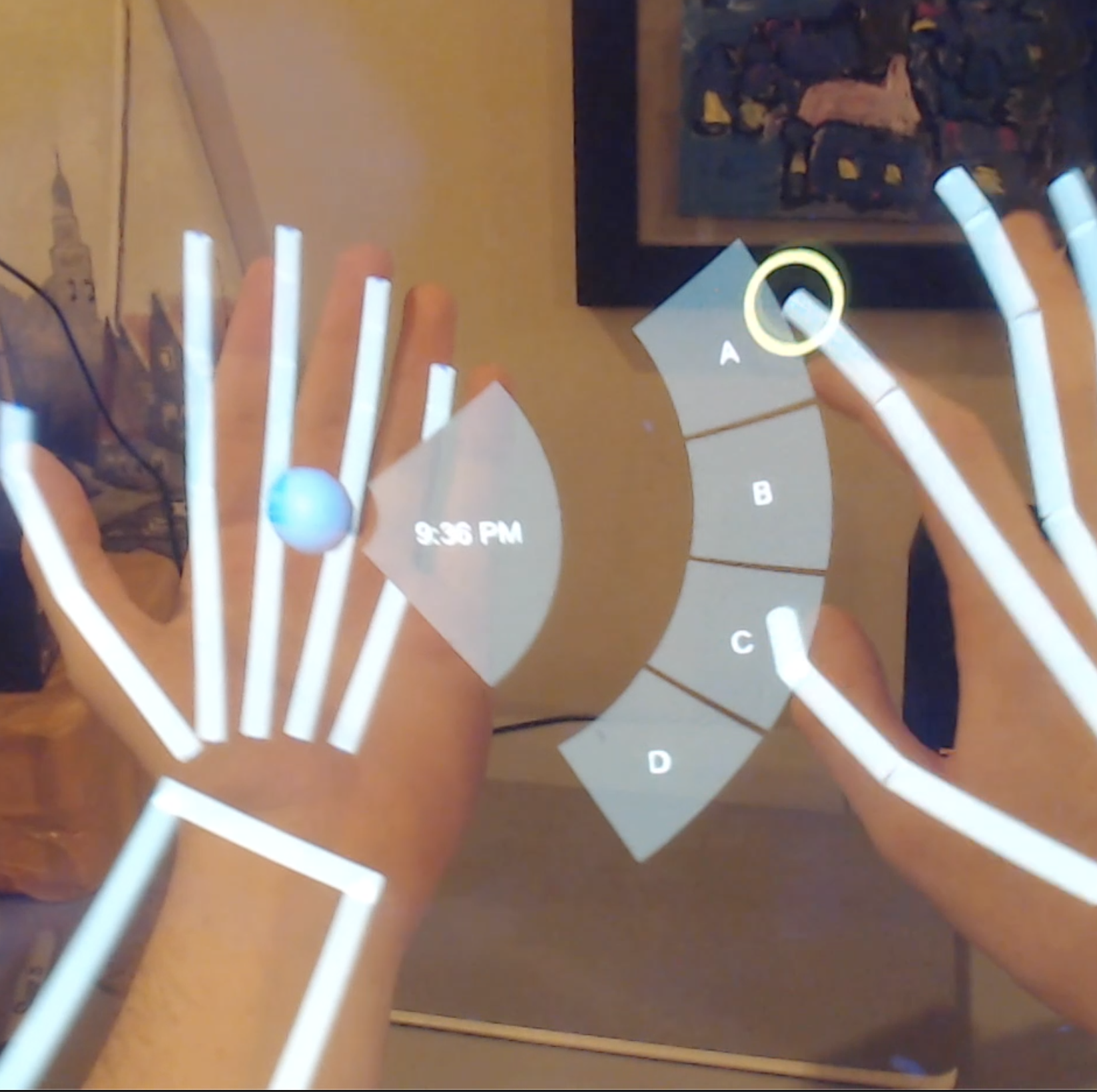Overview
After successfully building a Triton you are free to create your own software to run on the headset. On the other hand, I have created a custom desktop app that provides a more complete AR user experience and should fast track your project.
Triton AR Launcher
The Triton AR Launcher is a stand alone desktop app that launches AR content onto the headset. As of now the launcher will only support leap motion for dedicated hand tracking. The launcher is being released in alpha and will initially only have Windows support.
Development
Upon purchase of the Triton AR Launcher you have the option to receive a link to the github repository. From there you'll have full access to the source code in which you can modify the code to fit your project needs. The Triton Project has entirely been built with Javascript with the use of frameworks such as electron.js, three.js, and leap.js.
System requirements
Recommended
OS: Windows 10
Processor: Intel Core i7-4820k @3.70GHz
Memory: 16 GB
Graphics: GeForce GTX 760
Storage: 200MB
Important: If you purchase the launcher and want access to the Github repo please send a screenshot of your receipt along with your Github username to gatlee@leap27.com







